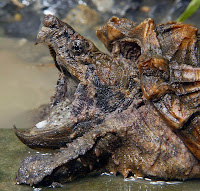

Like Brandon Jennings, Josh Childress is about to embark on an unprecedented voyage.
In signing with the Greek team Olympiacos Piraeus, he became the first upper-tier American NBA player still in the prime of his career to choose to jettison the League for Europe.
He chose to do this in part b/c
In signing with the Greek team Olympiacos Piraeus, he became the first upper-tier American NBA player still in the prime of his career to choose to jettison the League for Europe.
He chose to do this in part b/c
1) he was a restricted free agent over the summer, meaning he essentially was not able to sign with any other NBA team offering more money unless the Hawks allowed himWhy?
2) the Hawks did not want him to go to another team for more money this summer and did not want to pay him more money. They thought they had him cornered
3) Being "cornered" does not scream "trusting relationship" and, expectedly, when Childress and his agent discovered a way out - to the Athens' port city - they acted quickly.
Mainly for more money.
- Childress will make more per year with 20 million dollars over three years - a Euroleague record. Additionally, as the dollar devalues, his euros will become more valuable in his U.S. savings accounts.
- He also gets perks such a car and a nice house paid for by Olympiacos, benefits unknown stateside.
- Finally, he can opt-out and come back to the U.S. after any season. That should soften any regrets if he undergoes severe culture shocks a few months in.
Childress' progress will be as important to mid-tier NBA players looking for a market alternative for their services as Jennings' progress will be for high school players not wanting to undergo a year of collegiate seasoning / familiarization with the American public for future NBA marketing purposes.
It looks like our ex-Hawk hasn't forgotten how to take flight.
Here's footage of Josh Childress' first action in Greece - an intrahellenic preseason game.





.svg.png)






















